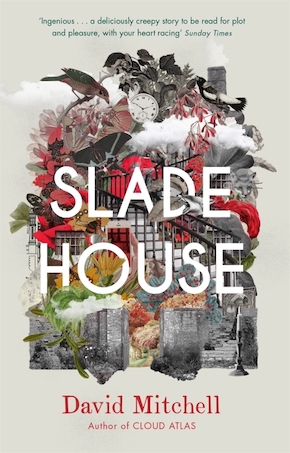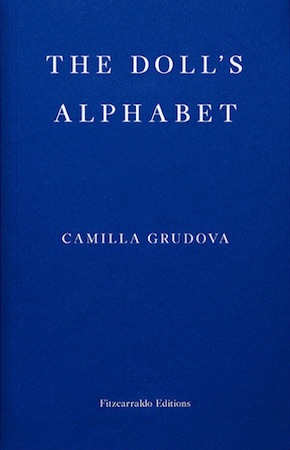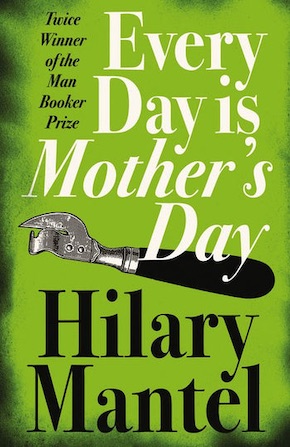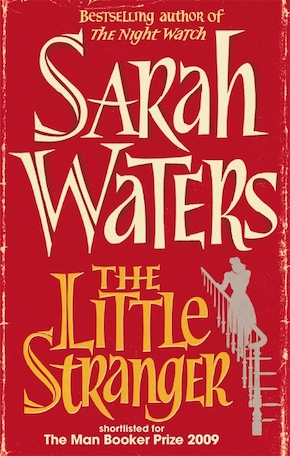“An unspeakable hell” – subversive spaces in literature
by Kate Collins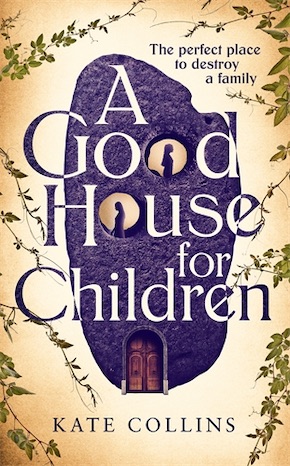
This is a collection of uncanny places, of nasty, squirming, blackened spaces. In the traditional haunted house, we place the blame for fear or hysteria or death squarely on the draped and ethereal shoulders of a ghost. They pass through walls and shriek in the bathrooms and lurk beneath the beds, causing all sorts of havoc. Broadly comfortable in their familiarity, the reader knows where they are with a good ghost.
But what of darker things, more wretched rooms? Where perhaps it’s the living that corrupt and terrify and are somehow worse than a ghost? Perhaps time itself is the transgressor, twisting and tripping the reader to petrify and mystify? Let’s visit a few dwellings where you may well fall victim to the crawling sensation up the back of the neck that something here just isn’t quite right…
—
Slade House by David Mitchell
Welcome to Slade House, grand old home to a pair of vampiric twins who lure in “the right sort” every few years to feast on their souls in order to sustain their immortality. Norah and Jonah Greyer exist outside of time, outside of reality, and when they need to replenish their pantry, they host Open Days for visitors who quickly become victims.
Slade House is as tricksy as the cunning twins who inhabit its unreal spaces. It shows itself only to the chosen invitees, it lurks down an alleyway which may or may not exist in passing. Doorways open up and close themselves off again to retreat behind wallpaper. Staircases move around, leading terrified guests back into the same rooms they’ve only just escaped. The house is delirious, it’s a fever-dream; we travel with each captive back and forth through time, careering between disjointed vignettes of their lives, make-believe scenes conjured up and manipulated by the twins to prepare the ‘meal’ for consumption: “It’s warm, confused, afraid… and it’s ready for filleting.”
We are confounded, confronted, set adrift: time, beneath Mitchell’s pen, becomes consumptive, enveloping, slippery and lithe, only ever as real as it is perceived by the dying. A looming old grandfather clock delivers ominous bongs at intervals – a delicious wink to camera for fans of the gothic novel. The clock face features not numbers but words: TIME IS, TIME WAS, TIME IS NOT.
Mitchell toys with the reader much as the twins toy with their prey; subject to the gleeful whims of the author, we find ourselves trapped inside a narrative that is as sly and disorienting as the house itself until, eventually, we are devoured.
Much like a body, the shop degrades and decays and must be resurrected moment to moment… everything in this shop is susceptible to the ravages of time, even a brand-new baby.”
‘The Moth Emporium’, from The Doll’s Alphabet by Camilla Grudova
“The shop was both tempting and sickening, like an old-fashioned gingerbread house…”
The costume shop is fenced with dismembered mannequins, limbs painted blue. Inside, more mannequins: crinolines jostle for space; macabre masks clutter the walls; assortments of wings rear from every corner. Grudova considers the shop a body, the racks and strips of fabric recalling a butchery – the masks of rubber and leather are “flayed skin”.
The unnamed narrator visits as a child in search of a Halloween mask, entranced and repulsed by the sinister, exotic items on display. Returning as an adult, she seduces the proprietor, Wolf, and moves into the shop.
Life there is both surreal and grindingly physical; rats and mice abound, everything is permeated with the stink of mothballs. Pests defecate and nibble and traps are perpetually full. Much like a body, the shop degrades and decays and must be resurrected moment to moment. When their baby is born, Wolf presents worn-out rompers and a wobbly old-fashioned pram; everything in this shop is susceptible to the ravages of time, even a brand-new baby.
Later, the shop is inhabited by hideous sculptures placed by the local historical society as part of an initiative to “bring history to life”. She is shocked by the grotesque, life-size tableaux of marital rape and resulting axe-murder, but Wolf finds them wonderful. Horrified, she leaves with the baby and burns down the shop with Wolf inside.
The shop is a corrupted specimen and the items inside it are pests; they overrun and burrow just as the endless moths burrow into the clothes. In the end, the diseased body of the shop is cleansed with fire.
—
Every Day is Mother’s Day/Vacant Possession by Hilary Mantel
Hilary Mantel’s early novels are, to borrow from Hobbes, “nasty, brutish and short.” Fiendishly, blackly funny, Every Day is Mother’s Day and its sequel, Vacant Possession, centre around a grim little medium, Evelyn Axon, and her mute and lumpish adult daughter, Muriel.
Evelyn and Muriel’s detached suburban house is crammed full of unquiet ghosts lurking in the cabinetry and spare rooms. They are spiteful, furtive, moving objects at random and smashing china with abandon and following Evelyn from room to room until she is driven quite mad. These ghosts are, unfortunately, inescapable; they are how Evelyn earns a living, although she is not as delicate as a customer might wish when seeking news of a departed loved one:“‘Mrs Sidney’, Evelyn said, ‘your husband Arthur is roasting in an unspeakable hell.’”
The house is dark, cold, prone to killing plants. Bloody handprints appear on the walls and poltergeists leave instructional notes: “GO NOT TO THE KITCHIN TODAY”. They leave gifts, too; a brand-new tin opener on the table in the parlour. Muriel is rather partial to the ghosts; she finds their antics amusing and thinks her mother weak. She is as much of a feral, sneaking presence as the spirits; grudging, glowering, she fills each room with her stout frame and silent resentment. Labelled “subaverage[ly] intellectual” by her social worker, Muriel haunts her mother’s house with a grimy sort of glee, colluding with the ghosts to bend Evelyn’s reality to the point of hysteria.
When Muriel becomes mysteriously pregnant and refuses to name the father, we are left to wonder about the darker activities within the house, and the metaphysical possibilities of a contaminated conception…
—
‘The Flea Trap’, from Paradise Block by Alice Ash
They live in an upside-down basement flat in Paradise Block: bedrooms below and living area upstairs. They are as topsy-turvy as their flat, these two people – presumably, a man and a woman since they managed to produce an unnamed and unwanted baby – and prefer to dwell in the dark below the surface rather than the bright upper floor. A litter of white kittens make their way into this dank, underground space via a broken window and provide much amusement – much more than the baby, who remains neglected upstairs and howls occasionally.
But the white kittens are riddled with fleas and the couple are bitten, gnawed at from head to toe – every inch covered in raised and itching welts. A trap is purchased to lure the fleas, a glowing carousel designed to attract and entertain and imprison atop a sticky plate from which the fleas cannot escape.
This couple is playful, irresponsible, psychotic; they spend hours each day squashing the fleas inside the trap, the sticky plate awash with flea-blood. A comparison is made, how the colour of the blood inside the fleas differs greatly to the colour of the blood inside the baby (alarming). So absorbed, they don’t even notice when the babysitter steals the baby entirely. Upon discovery, some time later, they are rather relieved.
The fleas grow ever more numerous; the kittens must be disposed of. But now they are left with no playthings at all and the man and the woman grow bored and sad. A new amusement must be sought and neighbourhood children are lured to the basement, enticed with promises of sweets and kittens: “They cannot resist the radiant carousel.”
The basement is a den, a lair. A trap. The upstairs windows shine in the gloom, beneath there is only blood. Such fun awaits! Won’t you come and see?
—
The Little Stranger by Sarah Waters
Hundreds Hall is haunted by more than just a ghost. Set in post-war rural Warwickshire, the house mirrors the decline of the landed classes and foreshadows the decay of a very specific social structure. Bricks and mortar crumble as conservatism retreats, and the introduction of the NHS marks a significant change in the life of the country doctor through whose eyes we first see the Hall.
As a visiting child, Doctor Faraday is captivated by Hundreds’ impressive frontage. His mother is a maid there and he first sees the inside from the scullery. Creeping to an upper floor, he marvels at the beauty of the panelling, the furniture, the grand staircases and portraits. Compelled to claim some part of this unattainable life, he hacks at the decorative plasterwork with a penknife to take home a piece of Hundreds for himself.
This disparity of circumstance inspires jealousy, vandalism, bad deeds. Hundreds is an object of obsession, of want, and signals both the pinnacle of the English class system and the vulnerability of it – the house and estate are ravaged by death duties, by war, by the changing political landscape.
Years later, Faraday becomes the physician for the family that owns Hundreds and eventually proposes to the daughter, Caroline. She and her mother are plagued by the ghost, which leaves pencil messages on the skirting boards and starts small fires: “… a Caliban, a Mr Hyde. A creature motivated by all the nasty impulses and hungers the conscious mind had hoped to keep hidden away.” Faraday is unconcerned, unbelieving, and alludes instead to “nervous disorders”. His desire for the house burns hotter than his desire for Caroline, and she breaks off their engagement only to promptly die from a fall, for which Faraday is present – we never truly know if it’s murder. The estate runs to full ruin, the house is abandoned.
Hundreds Hall bears the years of wealth obtained via social and economic oppression, the status achieved by standing on the necks of others, the violent belief in its own endurance. Hundreds corrupts, Hundreds consumes, until Hundreds itself becomes the ghost.
We feel every blow, every gouge, we feel the building resentment at owners who may at first polish and elevate, only to later lose interest and cover over with a dust sheet in an attic.”
‘Pretty Rooms’, from Parallel Hells by Leon Craig
How cruel we humans are, how casual in our hurt. How quickly we seek to possess and then to abandon.
A house, it would seem, is most brutalised by our caprices, by our changing tastes and fleeting fashions. The subject of Craig’s ‘Pretty Rooms’ is a collection of items collated and curated by a family across the course of their lives, including: a writing desk; a wedding trunk; ornaments of glass and metal.
Subject to the normative violence of domestic life, these objects accompany the family’s passage from youth to old age, via children and careers and everything in between. They are scratched, stained, left to woodworm, even kicked – we feel every blow, every gouge, we feel the building resentment at owners who may at first polish and elevate, only to later lose interest and cover over with a dust sheet in an attic: “Some of us were reconfigured in new shades, old boxes dragged back out into consciousness… Some of us were forever broken.” It is something akin to torture, the way the items are treated with such unpredictable affection.
Here, the human experience is elliptical. It’s the objects that define the space and their experience that shapes the rooms – people are the least of it. This place belongs to older things.
Eventually, they are split during an estate sale – some go to the now adult children, some are sold off, some are left forgotten to be mulched by rain – and so the items commune to maintain their shared continuity, their common objective; their owner’s vagaries cannot erase the innate essence of each piece. They create a collective consciousness, a plane on which they remain connected for all eternity, despite separation – a plane where they may go on serving their previous purpose. In this dimension they exist again in the old house, in their former configuration, in defiance of human disregard.
—

Kate Collins was born in Cork and has spent her career in trade and academic publishing. She studied literature and medieval history at Lancaster University and went on to complete an MA in contemporary literature at the same university. She lives in Oxfordshire. A Good House for Children, her debut novel, is published in hardback, eBook and audio download by Serpent’s Tail.
Read more
kate-collins.co.uk
@katecollinsetc_
@serpentstail
Author photo by Fiona Whitehouse

